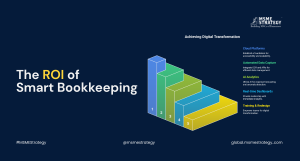In today’s volatile and data-rich business environment, seasoned entrepreneurs and financial heads know that surface-level profitability metrics rarely tell the whole story. Beneath the headline numbers often lie hidden inefficiencies, unnoticed cost leakages, and underperforming segments. While industry benchmarks offer valuable external frames of reference, the real advantage lies in understanding where — and why — a company’s internal performance deviates from them.
Margin diagnostics has emerged as one of the most powerful tools CFOs are using to unearth these hidden losses. Far beyond simple ratio analysis, it combines data science, comparative industry insights, and operational scrutiny to pinpoint the precise drivers behind underperformance — a practice especially critical for small and medium enterprises operating in fiercely competitive and resource-constrained environments.
Beyond the Benchmark: The CFO’s Dilemma
Industry benchmarks provide SMEs with an external view of what “good” looks like — typical gross margins in a sector, average customer acquisition costs, or expected overhead ratios. However, these figures are broad indicators at best. They fail to account for nuances like regional pricing models, niche offerings, or operational maturity.
CFOs face a recurring challenge: internal numbers may show margins in line with the industry average, yet cash flow remains erratic, or growth is stagnant. This is where margin diagnostics steps in — to reveal not just what’s happening, but why.
For example, a mid-sized logistics SME in Europe might see its gross margin align with global benchmarks for its industry, yet a deep diagnostic reveals that a single high-cost client segment is dragging down the overall margin by 4%. Without comparing internal client-level performance to the broader picture, this loss would remain buried.
Global Trends Reshaping Margin Diagnostics for SMEs
Across markets, margin diagnostics is becoming more intelligent and accessible. Several global trends are influencing how SMEs conduct financial scrutiny:
1. Rise of AI-Powered Financial Analytics
Cloud-based financial tools now offer margin analysis modules that automatically benchmark internal data against real-time industry metrics. These tools use AI to detect anomalies, flag margin compression zones, and even suggest corrective actions.
2. Integration of Operational and Financial Data
SMEs are increasingly linking their ERP, CRM, and financial platforms, allowing CFOs to perform cross-functional margin analysis. For instance, product line profitability can now be correlated with supplier performance and customer churn.
3. Sector-Specific Diagnostic Frameworks
In sectors like manufacturing, professional services, and D2C retail, specialized margin frameworks are helping SMEs identify bottlenecks — from SKU-level profitability to project overruns.
4. Benchmarking Beyond Borders
As SMEs expand globally, CFOs are benchmarking not only against local competitors but also against regional and global peers. A European SaaS SME might compare its support costs and upsell rates with similar-sized firms in North America or India, revealing significant process inefficiencies.
How CFOs Are Leading the Charge
CFOs in agile SMEs are repositioning themselves as strategic margin custodians. Rather than reacting to financial reports post-fact, they are embedding diagnostic thinking into decision-making processes.
For instance:
- A CFO in an East African agri-business launched a quarterly margin diagnostic review that revealed over-reliance on two low-yield crops, redirecting focus to more profitable product mixes.
- A German B2B service SME discovered through diagnostics that weekend operations, though seemingly efficient, had hidden overtime costs that eroded net margins.
In both cases, diagnostics drove immediate, high-impact decisions without waiting for annual audits or lagging indicators.
Turning Insights Into Action: What SME Leaders Can Do Now
To effectively bridge the gap between industry benchmarks and operational reality, SME leaders can take the following steps:
- Conduct Customer and Product-Level Margin Reviews: Move beyond aggregated profit data. Review margins at the customer, product, and channel level to isolate loss-making segments.
- Adopt Sector-Relevant Benchmarks, Not Just Averages: Use industry associations, analyst reports, or benchmarking databases to compare performance with similar-sized and regional peers.
- Use Diagnostic Tools that Integrate with Your Financial Stack: Modern platforms like Zoho Analytics, Microsoft Power BI, or industry-specific financial dashboards can deliver real-time insights without large enterprise budgets.
- Establish a Quarterly Margin Review Cadence: Build discipline around routine diagnostics, involving finance, operations, and sales to get a multi-angle view.
- Engage External Experts for Deep Dives: Sometimes an outsider’s lens can identify margin blind spots. Consider engaging consultants for one-off diagnostics to uncover overlooked inefficiencies.
At MSME Strategy Consultants, our experienced consultants are ready to help you make data-backed financial decisions and uncover hidden profitability in your SME operations.
#GlobalMSMEStrategy #MarginDiagnostics #SMECFO #FinancialInsights #ProfitabilityMatters #BenchmarkingForGrowth






